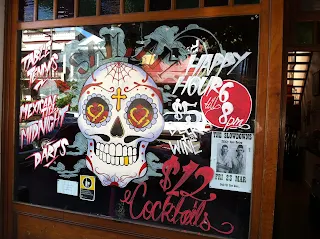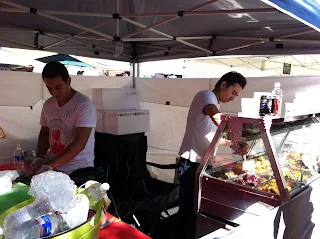Tucked away at the south side of Sydney CBD is the enclave of Glebe, all at once bohemian, buzzing, cosmopolitan and diverse. You have the choice of water views from Blackwattle and Rozelle Bays, shopping at the nearby and busy Broadway centre, quaint calmness in hidden lanes, Paddington styled terraces, non-mainstream bookshops, weekend markets, lifestyle produce and products, cafes, diverse dining options, bicycle friendly paths, music gigs, bricked roads, backpacker gathering holes, blue collar perspectives and student life. Beyond Glebe, within a five kilometre radius, you have access to other tribal places like Surry Hills, Darlinghurst and Newtown; commerce in ethnic hubs like Spanish Liverpool Street, Italian Leichhardt, Chinatown and Thaitown; choices in public transport like trams, trains and water taxis; tourist centres like Darling Harbour and the Sydney Fish Markets; work offices down George Street; university lifestyles from Sydney, Notre Dame and UTS; and across Sydney's major bridge links to Balmain and the lower North Shore. Sydney's greyhound racing is held nearby at the Wentworth Park - I recall that as I had some of CPA examinations held on site at the Park.
Glebe is best explored by walking, cycling or scootering. It is a place where rewards await those brave enough and with sufficient time to go off the proverbial main road. You will find the reconstructed Szu Yap Temple amidst the brick walls and urbane trees on a lane adjoining the lower slopes of Glebe Point Road. Along the way, you notice several cafe-style and dining outlets, some expensive, some community-friendly, others best for brunch or to while the weekend away. There are hidden gems in heritage mansions like the Bidura, Lyndhurst and the Bellevue - the Bidura was the home of architect and Glebe personality Edmund Blackett. The place was a land grant to the chaplain of the British First Fleet, Reverend Richard Johnson, hence the name "Glebe", which means a plot of land belonging or yielding profit to an English parish church or an
ecclesiastical office.
ecclesiastical office.
Above, I stumbled upon a still delightful way of selling ice cream and cooling delights for a summer's like day. At the Saturday Glebe Markets, a young lady carried on non-chalantly in front of the yellow coloured box, waiting for the customers, in the middle of the maze of stalls, performers and displays. Across the main road, one can be taken aback by funky and unusual offerings like the signs on the bar below. In Glebe, I am reminded of aspects of Sydney's Newtown on my most recent trip there, but here we have a slightly different feel, its very own character I must say and perhaps in a more organised way.


Glebe is not just for the visitor. For residents, it may encapsulate the best of what Sydney has to offer, except for beaches and surf. The Toxteh, Nude at the YHA, Nag's Head and Friend in Hand
are popular watering holes, although catering to different demographics. The village atmosphere is illustrated by the Glebe Street Fair, held on the third Sunday of each November, and month long celebrations over crafted teapots and Shakespeare. Never mind that the skyscrapers of the Big Smoke are only a ten minute walk or bus ride away, people do know each other as if they are back in the Tamar Valley in Tassie or in Bundanoon in the NSW Southern Highlands. Hockey, dragon boat racing, dance sessions and stand-up comedy are part of the activity routine. Jubilee Park has a different view of the ANZAC Bridge for the non-motorist. Delis, bakeries and fruit/veg suppliers retain a refuge for those returning every work day from the corporate and street life of most Sydney city centre dwellers.


You can find Nepalese, Thai, Indian, modern Australian, Malaysian, Japanese, Chinese, Greek, Italian, Mexican, Turkish, Lebanese and Vietnamese varieties of cuisine on offer in Glebe. Cafes like the Blackwattle Cafe, San Churro, the Cafe Bariloche, Saffo, Hernandez Coffee Dean, Badde Manors and the Clipper's Cafe provide various levels of ambiance, style and moods. I came across names like the Flying Fajista Sistas and Na Zdrowie.


The weekly Glebe markets are worth an exploration. There is a public-brave and presentable child who does modern dancing for you as part of his busking routine at the Glebe Point Road entrance. I found bamboo casings for IPhones (image above) and the most tasty and imaginative vegetarian salads (picture below).


In the scheme of the ordinary, and perhaps more manufactured artificiality, unique and crafted produce shall continue to be valued. Ingredients may be there a plenty, but in the end it is what you shape and present that counts. The human contribution of creativity and care makes it all worthwhile, and it is the thought that grows and blossoms that is significant.

The best representations of two cultures, the didgeridoo (above) and teapots (below) can be seen amidst the tightly packed stalls at the Glebe Markets.


Old and new, memories of yesterday and the routine of today, history and reality are all echoed in the images below and above. A question arises with the picture above - did the Busy Bee precede Wai Sing? Why was a paste-up job done for such a public display? A Spanish tapas business has now superseded Wai Sing at these premises, but cleverly decided not to tamper further with this wall. Below picture reminds me of a Saturday morning lifestyle, atypical of the Australian scene - family and mates will always be important, but when will the hard copy newspapers go and everyone is receiving the news on a mobile device instead?


Sandstone, brick, terracotta and multi-cantered windows do stand out in today's lifestyle. They remind us of a regimented past, which underlay the basis of today's freedoms, choice and thinking. They provide continuity, pride and curiosity to all who find increasing value in such materials and designs. Some may be of the view that they may not have suited the Sydney climate but was what the British settlers knew best and were comfortable with. The increasing multi-cultural nature of Australian society today has also emphasised harmony and use of local and indigenous, and this is all part of the maturing evolution of building culture.
The Valhalla, the Glebe Public School, Saint Scholistica's, the Wireless House in Foley Park and the Glebe Railway Viaduct are illustrative examples of the Glebe architectural heritage preserved and appreciated of colonial days.










No comments:
Post a Comment